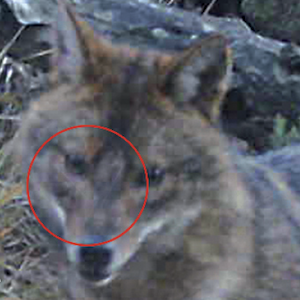The golden jackal Canis aureus L. 1758 (Carnivora: Canidae) on the Tuscan Apennines

Submitted: 5 February 2022
Accepted: 4 April 2022
Published: 20 October 2022
Accepted: 4 April 2022
Abstract Views: 1312
PDF: 590
Publisher's note
All claims expressed in this article are solely those of the authors and do not necessarily represent those of their affiliated organizations, or those of the publisher, the editors and the reviewers. Any product that may be evaluated in this article or claim that may be made by its manufacturer is not guaranteed or endorsed by the publisher.
All claims expressed in this article are solely those of the authors and do not necessarily represent those of their affiliated organizations, or those of the publisher, the editors and the reviewers. Any product that may be evaluated in this article or claim that may be made by its manufacturer is not guaranteed or endorsed by the publisher.
Similar Articles
- Paolo Galasso, Giovanni Spinella, Manuel Andrea Zafarana, Antonino Barbera, Andrea Cusmano, Giovanni Cumbo, Davide D'Amico, Dario Grimaldi, Renzo Ientile, Francesco La Spina, Davide Pepi, Antonino Torre, Giancarlo Torre, Salvatore Surdo, Status, distribution and conservation of Kentish plover Charadrius alexandrinus (Aves, Charadriiformes) in Sicily , Natural History Sciences: Vol. 9 No. 1 (2022)
- Paul Smith, Sergio D. Ríos, Status and distribution of Paraguayan Procyonidae and Mephitidae (Mammalia: Carnivora) , Natural History Sciences: Vol. 11 No. 1 (2024)
- Alessandro Garassino, Giovanni Pasini, A new squat lobster (Crustacea, Anomura, Munididae) from the Pliocene of Monterotondo Marittimo (Tuscany, Italy) , Natural History Sciences: Vol. 2 No. 1 (2015)
- Filip Verloove, Nicola Ardenghi, New distributional records of non-native vascular plants in northern Italy , Natural History Sciences: Vol. 2 No. 1 (2015)
- Gianfranco Liberti, Danilo Mario Piccolino, Contributo alla conoscenza della biodiversità entomologica del Parco del Ticino: Cantharidae (Coleoptera, Elateroidea), Cleridae, Malachiidae e Dasytidae (Coleoptera, Cleroidea) , Natural History Sciences: Vol. 1 No. 2 (2014)
- Arnd Schreiber, Historical ostriches in the Libyan Desert, with ecological and taxonomic considerations , Natural History Sciences: Vol. 11 No. 2 (2024)
- Giovanni Pasini, Alessandro Garassino, Palaemon monsdamarum n. sp. (Crustacea, Decapoda, Palaemonidae) from the late Miocene of Mondaino (Rimini, Emilia-Romagna, Italy) , Natural History Sciences: Vol. 5 No. 1 (2018)
- Manuela Davanzo, Giosuè Cuccurullo, Elena Zwirner, Davide Scridel, First record of Pancratium maritimum L. (Amaryllidaceae) for the Friuli Venezia Giulia region, Italy , Natural History Sciences: Early Access
- Giovanni Pasini, Alessandro Garassino, Marco Sami, Decapod assemblage from the late Miocene (early-middle Messinian) of the Romagna Apennines nearby Brisighella, Emilia-Romagna (N Italy) , Natural History Sciences: Vol. 6 No. 1 (2019)
- Andrea Lombardo, Giuliana Marletta, No longer so common: findings of Calliopaea bellula d’Orbigny 1837 (Gastropoda: Sacoglossa) and Tayuva lilacina (A. Gould 1852) (Gastropoda: Nudibranchia) along the central-eastern coast of Sicily (Ionian Sea) , Natural History Sciences: Vol. 10 No. 1 (2023)
You may also start an advanced similarity search for this article.


 https://doi.org/10.4081/nhs.2022.614
https://doi.org/10.4081/nhs.2022.614







